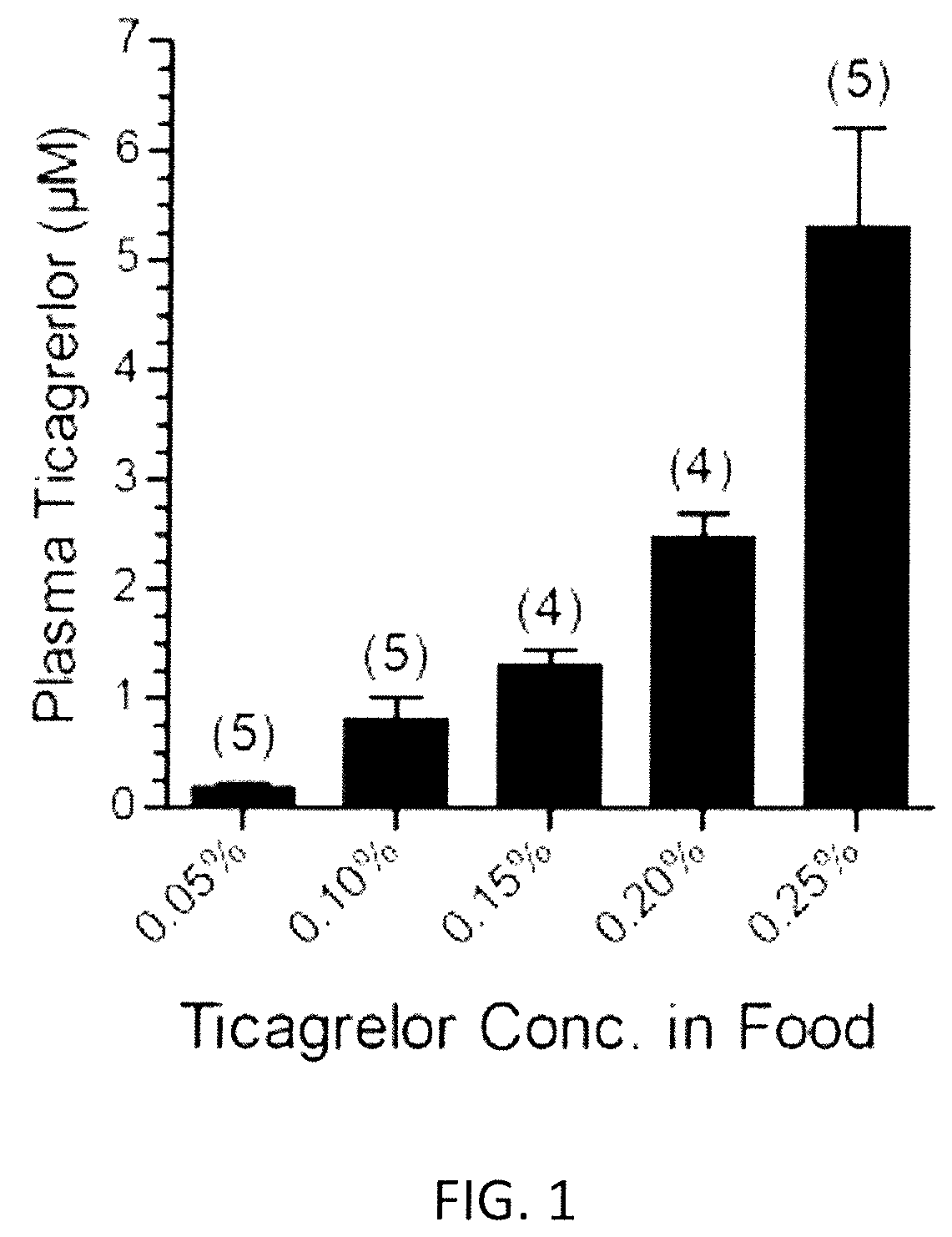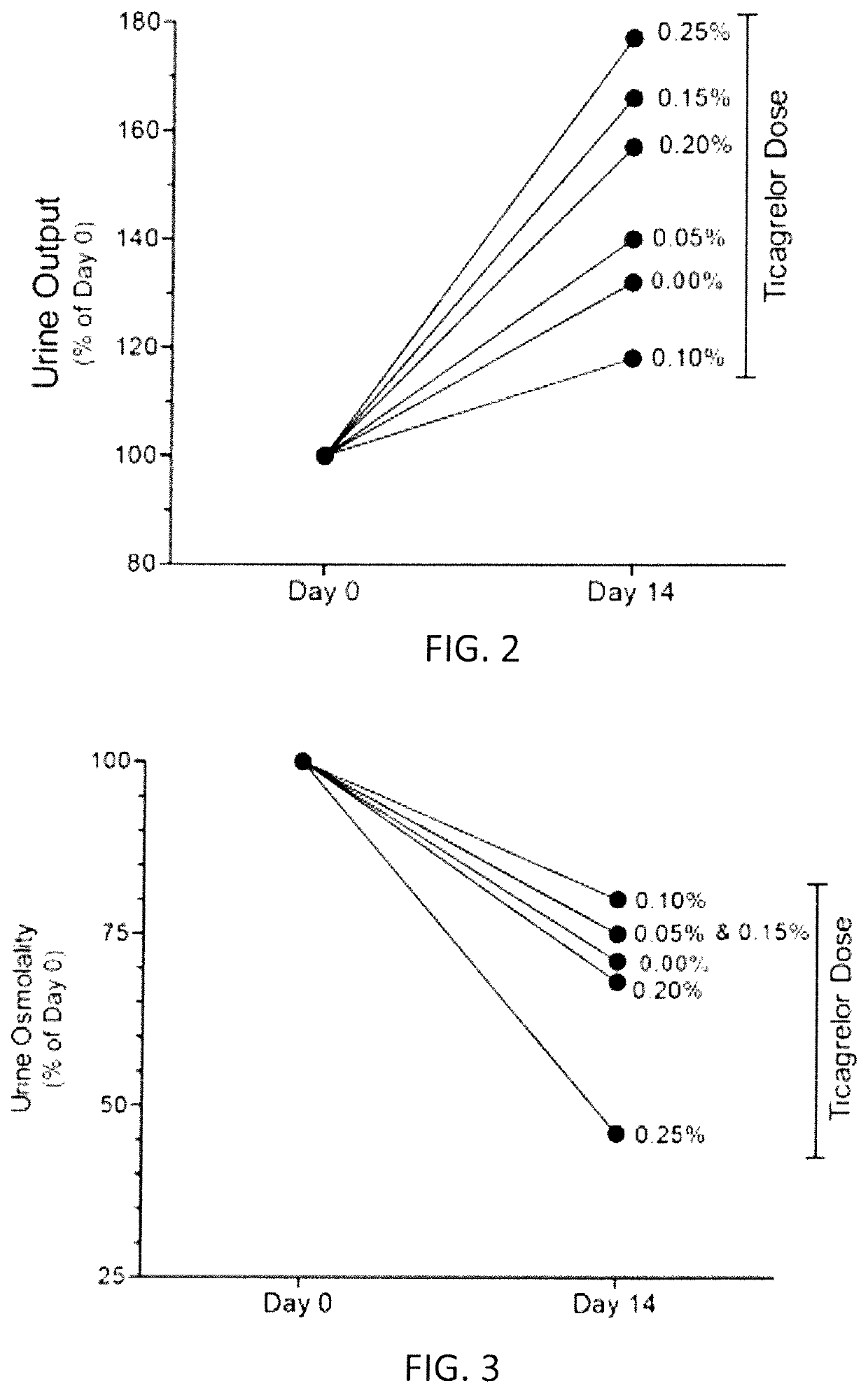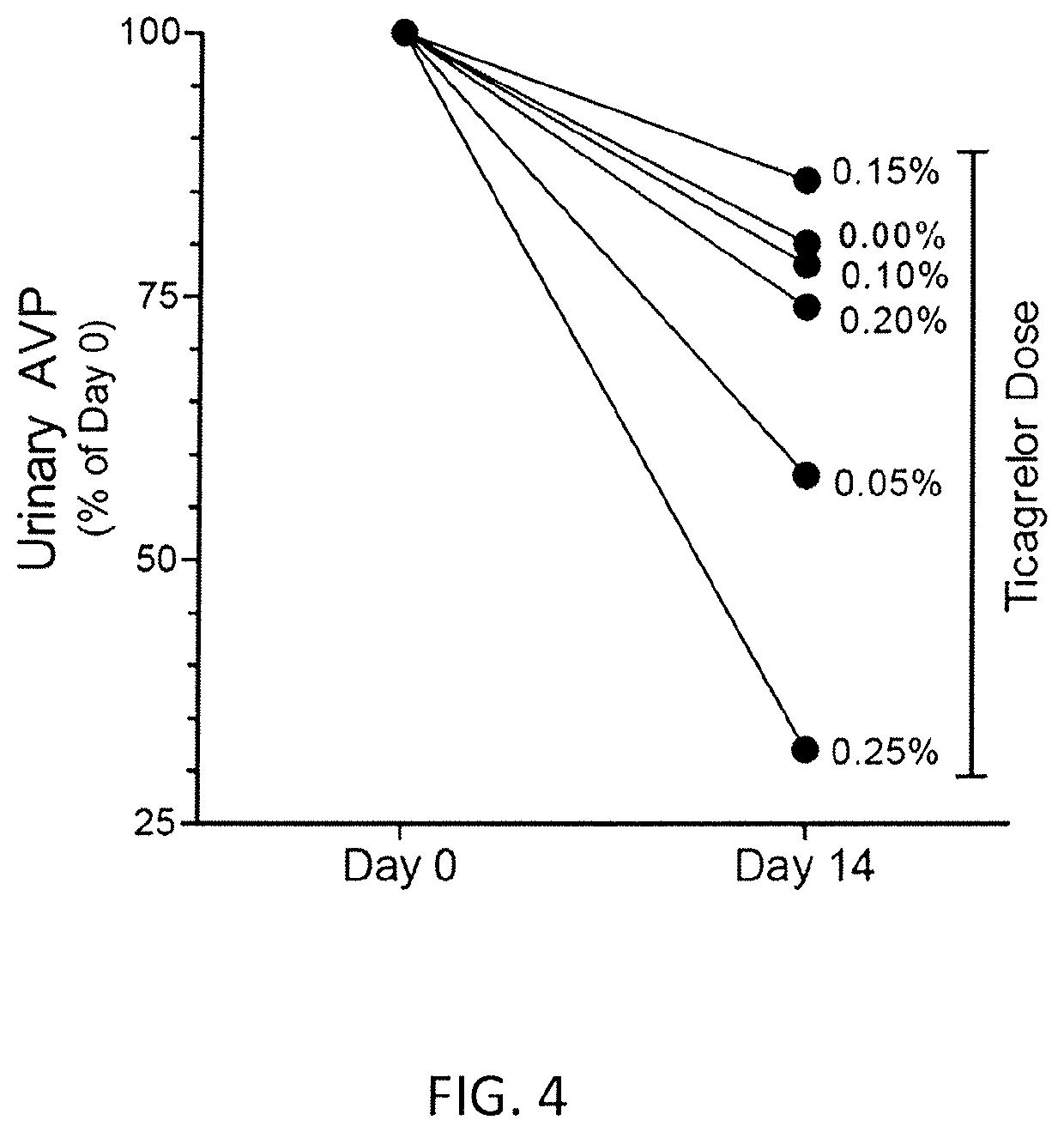Treatment of kidney diseases associated with elevated AVP
a technology of avp and kidney disease, which is applied in the field of treatment of kidney diseases associated with elevated avp, can solve the problems of affecting the normal functioning of kidneys, so as to reduce the production of arginine vasopressin (avp), and reduce the production of avp
- Summary
- Abstract
- Description
- Claims
- Application Information
AI Technical Summary
Benefits of technology
Problems solved by technology
Method used
Image
Examples
example 1
Materials and Methods:
[0142]The study evaluated the effect of increasing doses of ticagrelor from 0.05% to 0.25% (incremental doses of 0.05, 0.10, 0.15, 0.20 and 0.25%) administered to mice for 2 weeks and compared them with that obtained by administering increasing doses of clopidogrel bisulfate (20, 40 or 80 mg / kg bw / day). For this study adult B6D2 mice were used. Different doses of ticagrelor were administered embedded in diet. Clopidogrel bisulfate (Plavix® tablets) were powdered and dissolved in drinking water for administration. The concentration of clopidogrel in the water was adjusted on daily basis based on the water consumption by mice on the previous day.
[0143]Rodent diets containing ticagrelor at different concentrations were prepared as follows. 15 grams of ticagrelor was shipped to MP Biomedicals (Solon, Ohio, USA) for custom preparation of 10 kg of rodent chow in pellet form containing 0.15% ticagrelor. The custom-made diet was received and was stored at +4° C. Later ...
example 2
[0157]Primary cultures of rat inner medullary collecting duct (IMCD) cells were prepared. When the cells became 70-80% confluent, the medium was changed to relative starvation mode (low FBS), and used for testing the effect of Desmopressin (dDAVP), a V2 receptor-selective analogue of AVP, and / or ticagrelor. Cells were incubated for 48 h with ticagrelor ranging from 1.5 to 25 μM. During the second 24 hours, cells were challenged with dDAVP (20 nM). At the end of the incubation period, cells were harvested, RNA extracted, reverse transcribed and subjected to real-time PCR to determine the expression of AQP2 and AQP3 genes relative to the expression of the housekeeping genes (β-actin or GAPDH).
[0158]Results (FIGS. 6A-C) are presented as percent of the values in control incubations without any addition of agents. FIGS. 6A-C show the effect of different concentrations of ticagrelor on dDAVP (20 nM)-induced AQP2 or AQP3 expression relative to β-actin expression in primary cultures of rat ...
example 3
[0162]Based on the above observations in IMCD cells, where different concentrations of ticagrelor were used, it appears that at higher concentrations, ticagrelor can have an effect on the IMCD cells in general. At a concentration of 25 μM, ticagrelor almost completely suppressed the gene expression of AQP2 and AQP3. So, the effect of ticagrelor on cell viability was investigated using two approaches as follows (FIGS. 8A and 8B).
[0163]LDH Cytotoxicity Assay: Lactate dehydrogenase (LDH) is a cytosolic enzyme released into the cell culture medium when the plasma membrane is damaged. So, quantification of extracellular LDH activity in the medium indicates the viability of the cells exposed to agents. Thermo Scientific™ Pierce™ LDH Cytotoxicity Assay Kit was used, which is a simple and reliable colorimetric method for quantifying cellular toxicity. The kit is based on a coupled enzymatic reaction in which LDH catalyzes the conversion of lactate to pyruvate via NAD+ reduction to NADH. Dia...
PUM
| Property | Measurement | Unit |
|---|---|---|
| life-time | aaaaa | aaaaa |
| plasma range | aaaaa | aaaaa |
| size | aaaaa | aaaaa |
Abstract
Description
Claims
Application Information
 Login to View More
Login to View More - R&D
- Intellectual Property
- Life Sciences
- Materials
- Tech Scout
- Unparalleled Data Quality
- Higher Quality Content
- 60% Fewer Hallucinations
Browse by: Latest US Patents, China's latest patents, Technical Efficacy Thesaurus, Application Domain, Technology Topic, Popular Technical Reports.
© 2025 PatSnap. All rights reserved.Legal|Privacy policy|Modern Slavery Act Transparency Statement|Sitemap|About US| Contact US: help@patsnap.com



